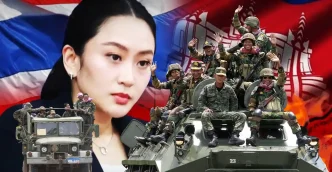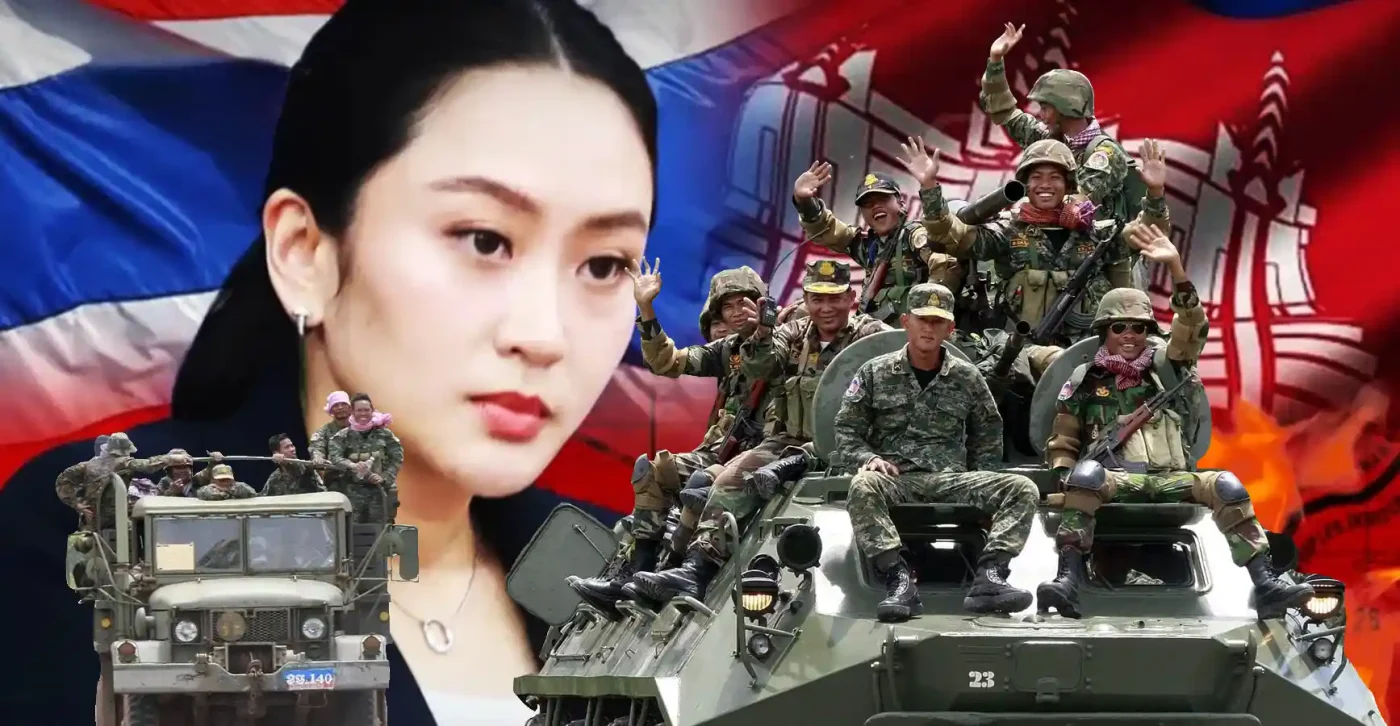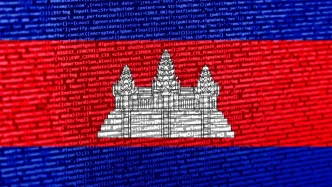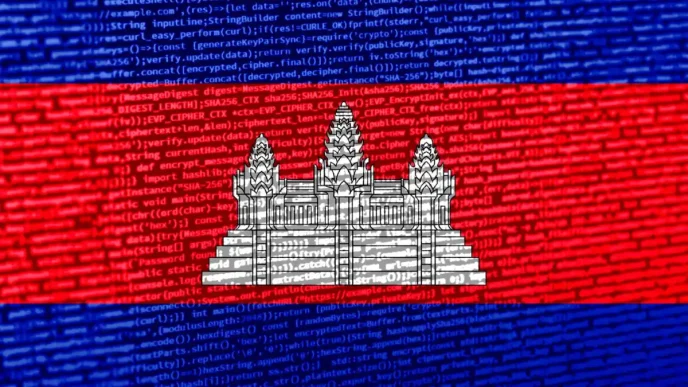After weeks of escalating friction along the Cambodian-Thai border, a breakthrough emerged as Cambodia agreed to withdraw its troops from a disputed area near the ancient Khmer temple of Prasat Ta Muen Thom in Oddar Meanchey province. The decision, announced following high-level military talks on June 8, 2025, marks a tentative step toward de-escalation in a region long plagued by territorial disagreements, though underlying tensions and competing claims persist.
Negotiations Yield Temporary Calm
The agreement came after a meeting between Lieutenant General Srey Doek, Deputy Commander of the Cambodian Army and Commander of the 3rd Intervention Brigade, and Major General Sompop Pharawet, commander of Thailand’s Suranaree Task Force. According to Royal Thai Army (RTA) spokesperson Major General Winthai Suvaree, both sides reached a consensus for Cambodian forces to retreat from the Chong Bok area to the Tri Muk Pavilion, approximately 150-200 meters from the contested zone, where they were previously stationed as per a 2024 accord.
Winthai emphasized that the withdrawal is intended “to reduce tension and create an atmosphere of cooperation” between the two ASEAN neighbors. As part of the deal, Cambodia also committed to filling in trenches that Thai authorities claim encroached 200 meters into their territory, a gesture aimed at restoring trust. Additionally, both parties agreed to leverage local border committee mechanisms, with weekly meetings scheduled to sustain dialogue and prevent further misunderstandings.
A History of Contention
The disputed area lies within the so-called Emerald Triangle, or Mom Bei in Khmer, a tri-border region intersecting Thailand, Laos, and Cambodia. This rugged, historically significant zone has been a flashpoint for decades, with overlapping territorial claims rooted in colonial-era mapping ambiguities and post-independence border delineations. The current standoff intensified on May 28, 2025, when a clash reportedly resulted in the death of a Cambodian soldier. Thai officials have described the incident as accidental, though details remain sparse and unverified by independent sources.
At the heart of the dispute is Prasat Ta Muen Thom, an 11th-century Khmer temple straddling the border. Cambodia asserts historical ownership over the site and surrounding areas, including Mom Bei, Ta Moan Tauch Temple, and Ta Krabei Temple, while Thailand maintains its sovereignty based on bilateral agreements and a 2000 Memorandum of Understanding (MoU). The MoU, which prohibits unilateral alterations to the terrain along the border, has been repeatedly cited by Bangkok as a legal framework for resolving such disputes.
Political Posturing and International Implications
Despite the recent agreement, Cambodia’s leadership has sent mixed signals. Senate President Hun Sen and Prime Minister Hun Manet had previously insisted that their troops would not withdraw, framing the contested land as integral to Cambodian territory. In a bold move, Hun Sen announced Phnom Penh’s intention to seek adjudication from the International Court of Justice (ICJ) over this dispute and other contentious border areas. “We will bring all unresolved issues before the ICJ for a fair resolution” he declared in a public address reported by local media on June 5, 2025.
Thailand, however, has rejected the ICJ’s jurisdiction in this matter, advocating instead for bilateral mechanisms like the Joint Boundary Committee (JBC). A JBC meeting is slated for June 14, 2025, though the agenda remains unclear, and expectations for a lasting resolution are tempered by historical precedents. Past ICJ rulings, such as the 1962 decision awarding the nearby Preah Vihear Temple to Cambodia, have fueled nationalist sentiments on both sides, often complicating diplomatic efforts.
The Thai Foreign Ministry has reiterated its commitment to a bilateral approach, with Foreign Minister Parnpree Bahiddha-Nukara clarifying the kingdom’s position in a recent discussion with his Cambodian counterpart. Meanwhile, border crossings have faced temporary restrictions, with Thailand reducing operating hours at several checkpoints citing security concerns, a move that has drawn criticism from local traders and communities reliant on cross-border commerce.
Regional Stability at Stake
The Cambodian-Thai border dispute is more than a bilateral issue; it carries implications for regional stability within ASEAN, a bloc often criticized for its limited capacity to mediate internal conflicts. The Emerald Triangle, notorious for its history of armed skirmishes and illicit trade, remains a volatile zone where military posturing can quickly spiral into broader confrontation. Analysts note that unresolved border tensions could undermine ASEAN’s unity at a time when the region faces pressing challenges, from economic recovery to geopolitical rivalries in the South China Sea.
Public sentiment, as gauged from social media platforms like X, reflects a mix of frustration and cautious optimism. While some users in Thailand express support for their government’s firm stance, others lament the impact of border closures on livelihoods. In Cambodia, nationalist rhetoric appears prominent, with many echoing Hun Sen’s call for international arbitration. However, the lack of verified information about recent incidents, including the reported death of a soldier, underscores the need for transparency to prevent misinformation from fueling further discord.
Economic and Human Costs
Beyond geopolitics, the standoff has tangible effects on border communities. Trade disruptions have hit local economies hard, with reports of reduced cross-border traffic affecting markets in Oddar Meanchey and Thailand’s Surin province. Small-scale traders, who often shuttle goods worth thousands of Thai Baht daily—equivalent to hundreds of US dollars (e.g., 3,500 Thai Baht ~US$98 as of June 9, 2025)—face mounting losses. Farmers and residents in the area also grapple with restricted movement, exacerbating long-standing grievances over access to land and resources near the disputed zones.
Ethnic and cultural dimensions add another layer of complexity. The border region is home to diverse communities, including ethnic Khmer in Thailand and Thai nationals of Cambodian descent, whose identities and allegiances are often caught in the crossfire of nationalist narratives. Hun Sen’s recent warning against “ethnic hatred” during a speech on June 7, 2025, highlights the risk of communal tensions if the dispute escalates further. Both governments face the delicate task of addressing territorial claims without alienating shared cultural heritage, symbolized by sites like Prasat Ta Muen Thom.
Looking Ahead: A Fragile Truce
While Cambodia’s troop withdrawal offers a momentary reprieve, the path to a sustainable resolution remains fraught with challenges. The upcoming JBC meeting will test both nations’ willingness to prioritize dialogue over brinkmanship, but entrenched positions—particularly Cambodia’s push for ICJ involvement and Thailand’s insistence on bilateral frameworks—suggest that deeper disagreements are far from settled. Moreover, the absence of independent verification regarding recent clashes raises questions about accountability and the potential for renewed hostilities.
For now, the handshake between Cambodian and Thai soldiers at Prasat Ta Muen Thom on March 26, 2025, captured in a widely circulated photograph, serves as a symbolic reminder of what cooperation could achieve. Yet, as military leaders return to their respective capitals and border communities brace for the next chapter, the shadow of history looms large. Will this agreement mark the beginning of lasting peace, or is it merely a pause in a centuries-old struggle for sovereignty? Only time, and perhaps the resolve of ASEAN’s diplomatic machinery, will tell.
















